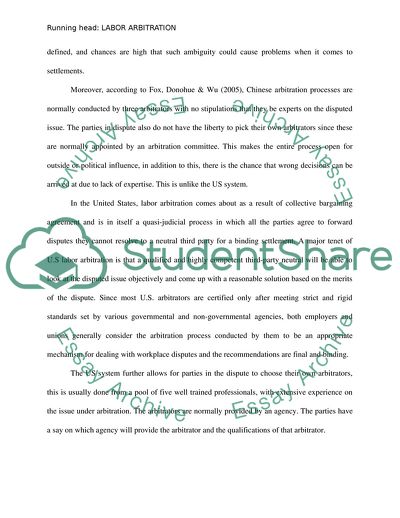Cite this document
(Labor Arbitration Procedures in the United States and China: A Essay Example | Topics and Well Written Essays - 1500 words, n.d.)
Labor Arbitration Procedures in the United States and China: A Essay Example | Topics and Well Written Essays - 1500 words. https://studentshare.org/law/1849544-labor-relation-comparison
Labor Arbitration Procedures in the United States and China: A Essay Example | Topics and Well Written Essays - 1500 words. https://studentshare.org/law/1849544-labor-relation-comparison
(Labor Arbitration Procedures in the United States and China: A Essay Example | Topics and Well Written Essays - 1500 Words)
Labor Arbitration Procedures in the United States and China: A Essay Example | Topics and Well Written Essays - 1500 Words. https://studentshare.org/law/1849544-labor-relation-comparison.
Labor Arbitration Procedures in the United States and China: A Essay Example | Topics and Well Written Essays - 1500 Words. https://studentshare.org/law/1849544-labor-relation-comparison.
“Labor Arbitration Procedures in the United States and China: A Essay Example | Topics and Well Written Essays - 1500 Words”. https://studentshare.org/law/1849544-labor-relation-comparison.


